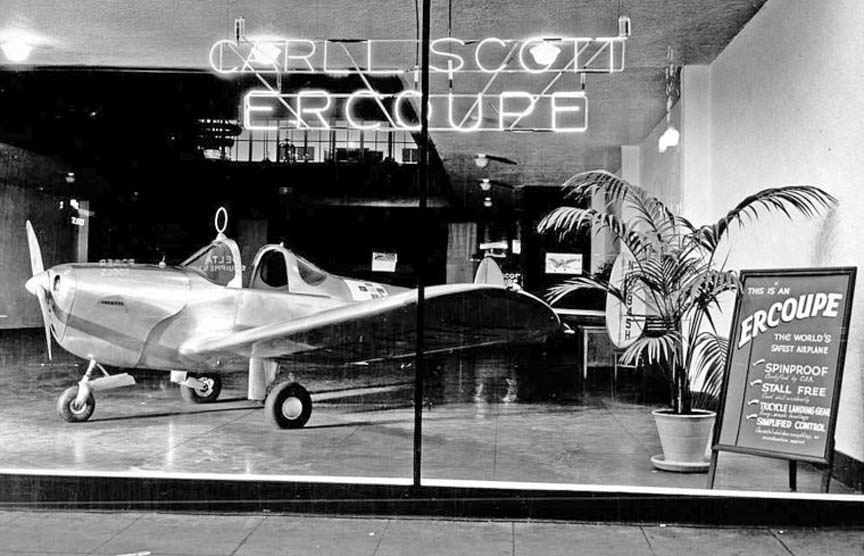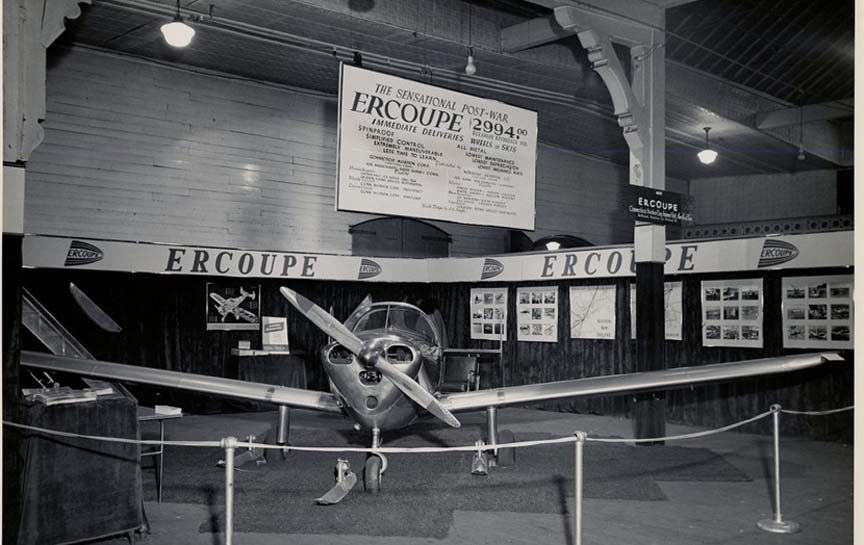|
The future is unwritten
Join Date: Oct 2002
Posts: 71,105
|
May 23rd, 2019: Ercoupe
After The Big One, WW II, a lot of military men and women came home with a new life experience under their belt... Flying.
Not only the thousands of pilots but many times that amount of air crew, plus paratroopers and others transported by air.
Of course some swore never again, but many were addicted, wanted more. ERCO was ready for that market.
Quote:
In October 1945, the future of travel sat in a glistening showroom in a Manhattan Macy’s. Alongside the department store staples of household appliances, gentlemen's socks and ladies’ girdles was a small, all-metal, two-seater airplane. This was the Ercoupe, “the airplane that anyone could fly.”
Built by the Engineering and Researching Corporation (ERCO), the Ercoupe was billed as “America’s first certified spin-proof plane.” It was safe: Ads called it the “world’s safest plane” and compared its handling to that of the family car. Others vouched for its affordability, emphasizing that it cost less than $3,000 (about $39,000 today). It was also a media sensation: LIFE Magazine called it “nearly foolproof” and the Saturday Evening Post asked readers to not look at it “as another airplane, but as a new means of personal transportation.”
|

Quote:
The first production model was completed in 1938 (an early model can be found in Smithsonian’s collections), and it was unlike anything ever crafted before. It steered like a car due to the nose wheel being connected to the control wheel. It featured triangle landing gear, an innovation still used today. Most noticeably, though, the Ercoupe was rudderless, meaning the plane was flown entirely through the control wheel. When the Civil Aeronautics Administration decreed that the plane was “characteristically incapable of spinning” in 1940, it was clear that the Ercoupe had earned its famous moniker: “the plane that flies itself.”
For a while, the plane even seemed to be impervious to world events. Though ERCO only manufactured 112 airplanes before the looming war effort halted production, it started selling the plane as soon as World War II ended. By the end of 1945, the airplane was in department stores across the country – from Denver to Baltimore, from San Antonio to Allentown. Celebrities like Dick Powell and Jane Russell bought and endorsed the airplane. The Secretary of the Interior Henry Wallace flew an Ercoupe solo. Magazine and newspaper features were written highlighting the safety, accessibility and affordability of the Ercoupe.
ERCO’s marketing blitz worked: During the first year, the company took over 6,000 orders. To keep up with demand, Berliner increased production, firmly believing the boom was here to last. By mid-1946, the ERCO factory in Riverdale was producing 34 airplanes a day.
Then, it all fell apart.
|

Quote:
The Ercoupe’s journey from boom to bust happened seemingly overnight. First, production outpaced demand. A brief economic downturn in 1946 spooked would-be purchasers. And professional pilots voiced their suspicion of the plane, pointing out that while the plane was safe in the hands of an experienced operator, descents and speed drops could prove to be fatal for the average consumer.
In the end, only 5,140 Ercoupes were produced. Just two years after taking America by storm, Berliner sold the rights to his plane. Seven years after it was introduced, production of the plane ceased for good.
|
Ask the man who owns one.
Quote:
|
Schuldt, who has had his pilot’s license since 1996, says the Ercoupe is relatively simple to learn. But, like pilots of yore, his enthusiasm comes with a caveat. “90 percent of the time you can teach someone how to fly this plane much more easily and simply than many other airplanes,” he says. “The only problem is that last ten percent: It’s the ten percent that will kill you.”
|
link
__________________
The descent of man ~ Nixon, Friedman, Reagan, Trump.
|




